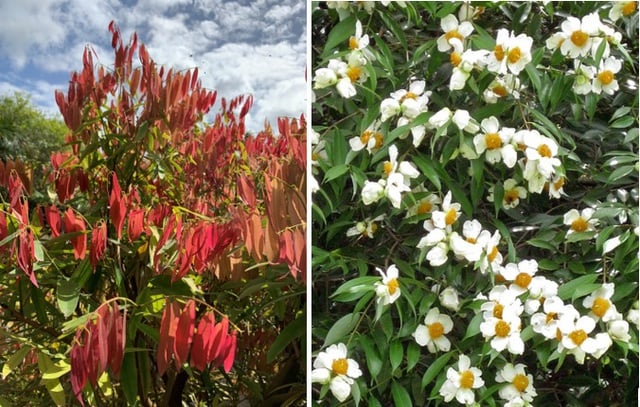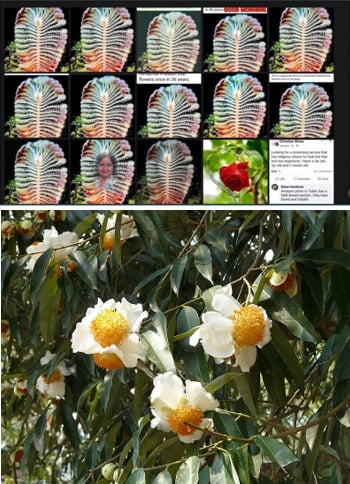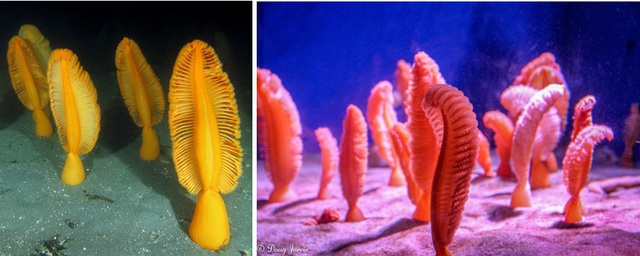Many people call the rare flower in the Himalayas Nagapushpa, others call it by "different" names like Nagapushpam, Naga Pushpa or Naga Pushpam... Some people even tell the date and time the flower blooms as if they saw it with their own eyes.

Mesua ferrea has the Sanskrit name Nagapushpa. This plant has pink to red young leaves (fruit) and large white flowers.
nparks.gov.sg, wikimedia.org
In fact, there is no flower that blooms once every 36 years. In Sanskrit, there is indeed a word "Nagapushpa" - the exact pronunciation is "nAgapuSpa" ( नागपुष्प), used to refer to the flower of the plant called "Nagapushpa", a plant with the scientific name Mesua ferrea , English name is Indian rose chestnut, Sri Lanka ironwood or Cobra's saffron.
This plant belongs to the Calophyllaceae family and is native to the Indomalaya ecoregion. Mesua ferrea is grown as an ornamental plant for its graceful appearance, large fragrant white flowers, and gray-green foliage with drooping young leaves. The young leaves are gorgeous and range in color from pink to red. Mesua ferrea is the national tree of Sri Lanka, as well as the states of Mizoram and Tripura in India. Of course, this plant looks nothing like the plant that is said to bloom once every 36 years.
Researchers have investigated and found that the original image of this "36-year-blooming" flower originated from Pinterest , uploaded in 2013, in the Strange Flowers folder, with the caption "Sea feather" by Gordon B Bowbrick. Later, someone deliberately forged the name of the flower Nagapushpa to assign to this "sea feather", a type of marine animal that specializes in eating plankton.
In Vietnamese, people often call sea feathers "sea pens", a group of "soft corals" (octocorallia), with many different shapes, sizes and colors.

Sea pen (above) is not Nagapushpa flower (below), these two species are completely different
factcrescendo.com, wikimedia.org
Sea pens are invertebrates belonging to the class Anthozoa (phylum Cnidaria), with a total of about 35 genera in 14 families in the order Pennatulacea. It is estimated that there are about 300 species of sea pens distributed globally, mainly in tropical and temperate waters, as well as from the intertidal zone to depths of more than 6100 m. Sea pens are in the same group as octocorals and gorgonians.
The Chinese call this species "hai pen" (海笔, hǎi bǐ); it also means "sea pen" as the British, German and Russian call it (Sea pen, Seefedern, Морские перья). The species introduced here have an appearance like a standing tree trunk, about 40cm high, reminiscent of an ancient brush pen, hence the name.

Sea pens are a group of animals, belonging to the order Pennatulacea, that have been disguised as the Nagapushpa flower that blooms once every 36 years.
timswww.com.au, mindenpictures.com

Yellow sea pen (Ptilosarcus gurneyi) and orange sea pen
seaslugforum.net, jarvie.ca
Like other corals, sea pens reproduce seasonally or year-round. They “release” eggs and sperm. The fertilized eggs develop into larvae called “planulae,” which drift freely for a week before coalescing and forming a nesting ground for fish.
In the foreign aquarium market, there are sometimes some species of sea pens for sale. However, they are difficult to care for, because sea pens need a very deep substrate and a special diet.
Finally, let me reiterate, there is no flower in the Himalayas called Nagapushpa. Someone named the sea pen after the Nagapushpa tree ( Mesua ferrea ) and gave it a false caption as "the flower that blooms once every 36 years". Currently, many gullible people have shared this information, turning it into a sensational phenomenon on the internet.
Source link


























![[Photo] National Assembly Chairman Tran Thanh Man visits Vietnamese Heroic Mother Ta Thi Tran](https://vphoto.vietnam.vn/thumb/1200x675/vietnam/resource/IMAGE/2025/7/20/765c0bd057dd44ad83ab89fe0255b783)






































































Comment (0)